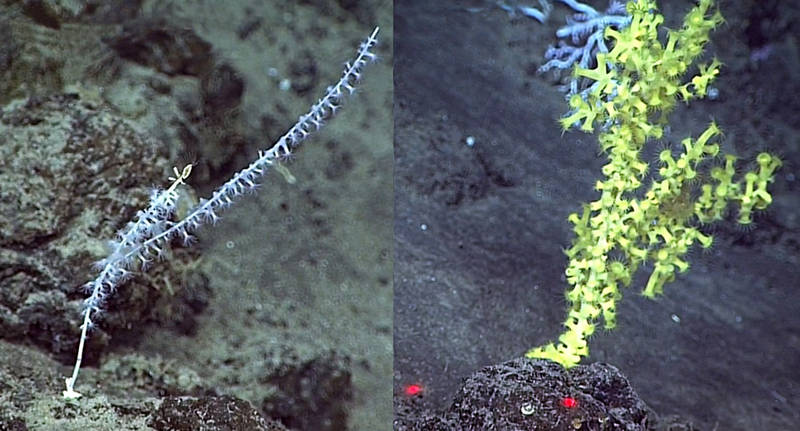

Young bamboo coral (Isididae) colonizing a rock (right). Gold coral (Kulamanamana haumeaae) after fully colonizing a young bamboo coral skeleton (left). The laser points (red dots) are 10 centimeters (~4 inches) apart and are used to determine coral size. When gold coral planula larva attaches to and the colony eventually subsumes the host is the fastest growth phase of the coral as it must stabilize the skeleton and secure the base to avoid toppling which could result in colony death.